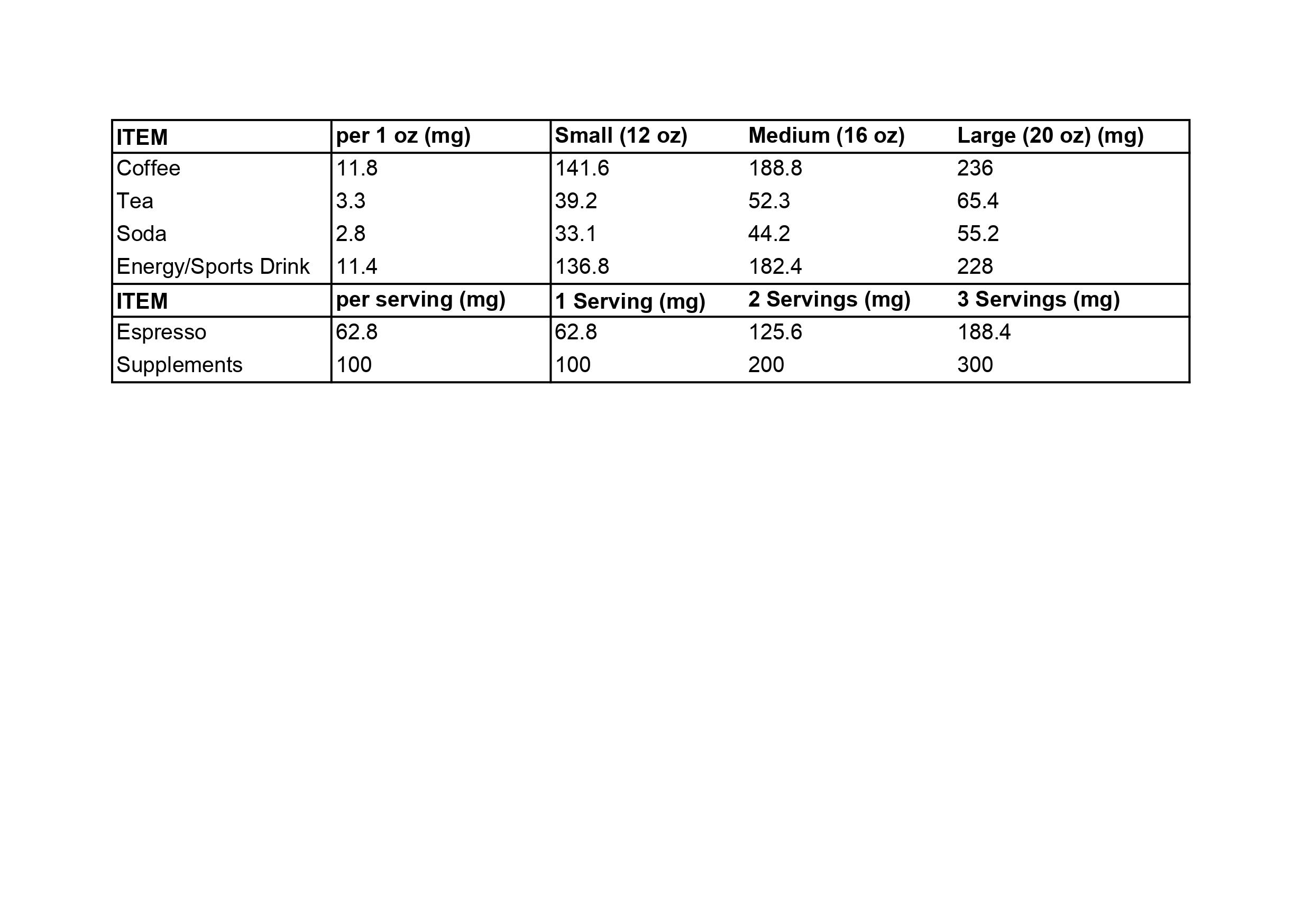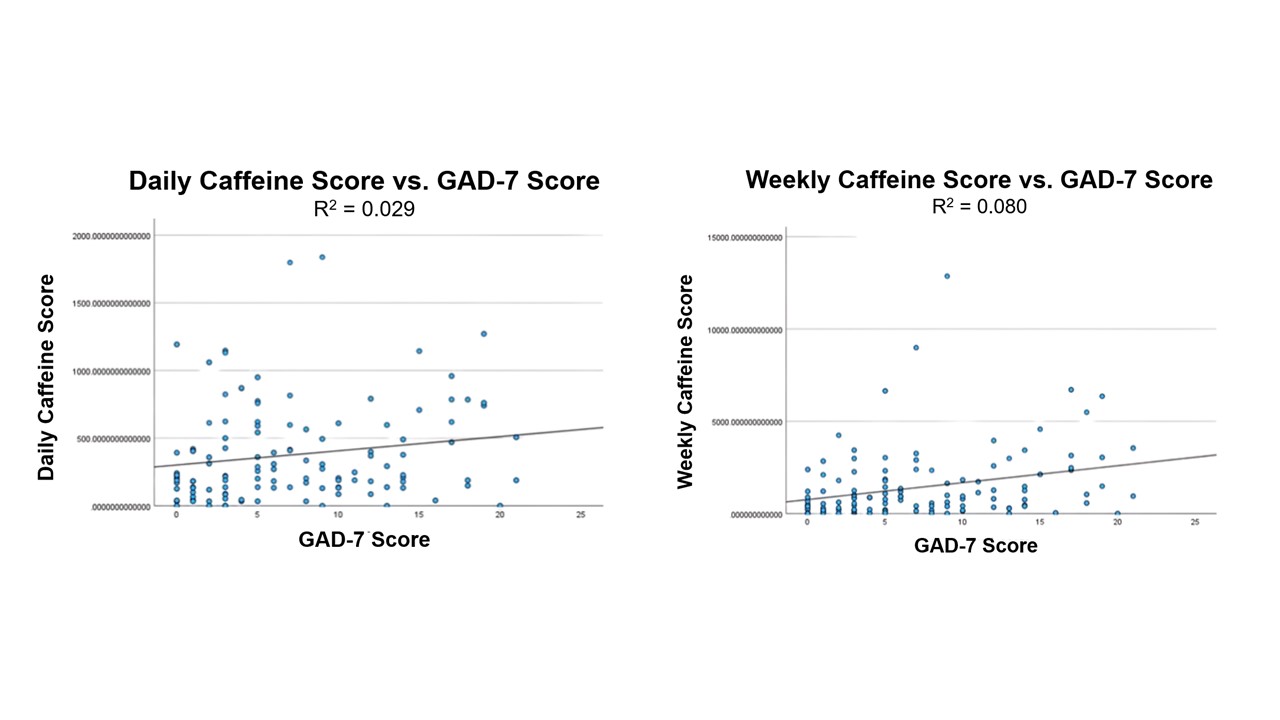Mental Health 3
Session: Mental Health 3
086 - Understanding Adolescent Anxiety through Caffeine Consumption Patterns
Monday, April 28, 2025
7:00am - 9:15am HST
Publication Number: 86.6860
Poorna Balakumar, University of Connecticut School of Medicine, West Haven, CT, United States; Sharon Smith, UConn/CT Childrens, Hartford, CT, United States
- PB
Poorna Balakumar (she/her/hers)
Medical Student
University of Connecticut School of Medicine
West Haven, Connecticut, United States
Presenting Author(s)
Background: Caffeine is being increasingly consumed above recommended amounts by many age groups. The American Academy of Pediatrics recommends a maximum of 100 mg of caffeine per day in adolescents. Associations between caffeine and anxiety levels are not well studied in adolescents, a potentially sensitive population.
Objective: To examine the association between caffeine consumption and self-reported anxiety levels in a cohort of adolescent Emergency Department patients.
Design/Methods: This is a prospective cohort study conducted in a pediatric emergency department. Adolescents aged 12-18 years were enrolled. Excluded were patients with prior participation, psychiatric chief complaints and/or critically ill. Age, sex and race/ethnicity were collected. Daily and weekly caffeine consumptions were asked. The average amount of caffeine intake per day and per week (mg) per subject was calculated based on reported type, serving size and frequency of caffeinated items (Table). Self-reported anxiety levels were evaluated through the Generalized Anxiety Disorder 7 validated questionnaire (GAD-7). Participants were also asked about amount and quality of daily sleep.
Results: There were 182 total subjects enrolled with a mean age of 14.9+/-1.7 years; 37.6% male, 59.7% female; 18.8% Black, 53.6% White, 20.4% Other/Mixed. ‘Small’ size soda and energy drinks were the most frequently consumed items, followed by ‘medium’ size coffee and tea. The mean caffeine score was 367.1 mg daily and 1376.4 mg weekly.
The mean GAD score was 6.5 (“Mild anxiety”). There was a positive association between caffeine consumption and GAD-7 scores: participants with higher daily and weekly caffeine scores demonstrated higher GAD scores (p=0.002). Age and GAD score were also positively correlated (p=0.031) (Figure 1). On average, participants reported: 7.1 hours of sleep on school nights, difficulty falling asleep 2.7 days a week and a 6.21 rating of sleep quality. Negative correlations were found between GAD score, difficulty falling asleep and sleep quality (p < 0.001). Age, difficulty falling asleep (p=0.041) and sleep quality (p=0.041) were also negatively correlated. No significant correlations were found between caffeine scores and sleep variables, however.
Conclusion(s): These results demonstrate significant correlations between caffeine consumption, anxiety levels and sleep behaviors in adolescents. Caffeine consumption was positively associated with higher GAD scores. A potential dose-response relationship was observed, with higher GAD scores being reported by patients who consumed caffeine more frequently and in greater amounts.
Caffeine Amount (mg) per Item per Serving Size
 The amount of caffeine consumed per day was calculated by multiplying the amount in milligrams per product by the amount consumed per day. Weekly caffeine was calculated by multiplying daily caffeine by the number of days that caffeinated beverages are consumed per week. The caffeine content values used for calculations is as described above.
The amount of caffeine consumed per day was calculated by multiplying the amount in milligrams per product by the amount consumed per day. Weekly caffeine was calculated by multiplying daily caffeine by the number of days that caffeinated beverages are consumed per week. The caffeine content values used for calculations is as described above.Caffeine Score vs. GAD-7 Score
 The mean GAD-7 score was 6.54 (“Mild anxiety”). There was a positive association between caffeine consumption and GAD-7 scores: participants with higher daily and weekly caffeine scores demonstrated higher average GAD scores (p=0.002).
The mean GAD-7 score was 6.54 (“Mild anxiety”). There was a positive association between caffeine consumption and GAD-7 scores: participants with higher daily and weekly caffeine scores demonstrated higher average GAD scores (p=0.002). 
